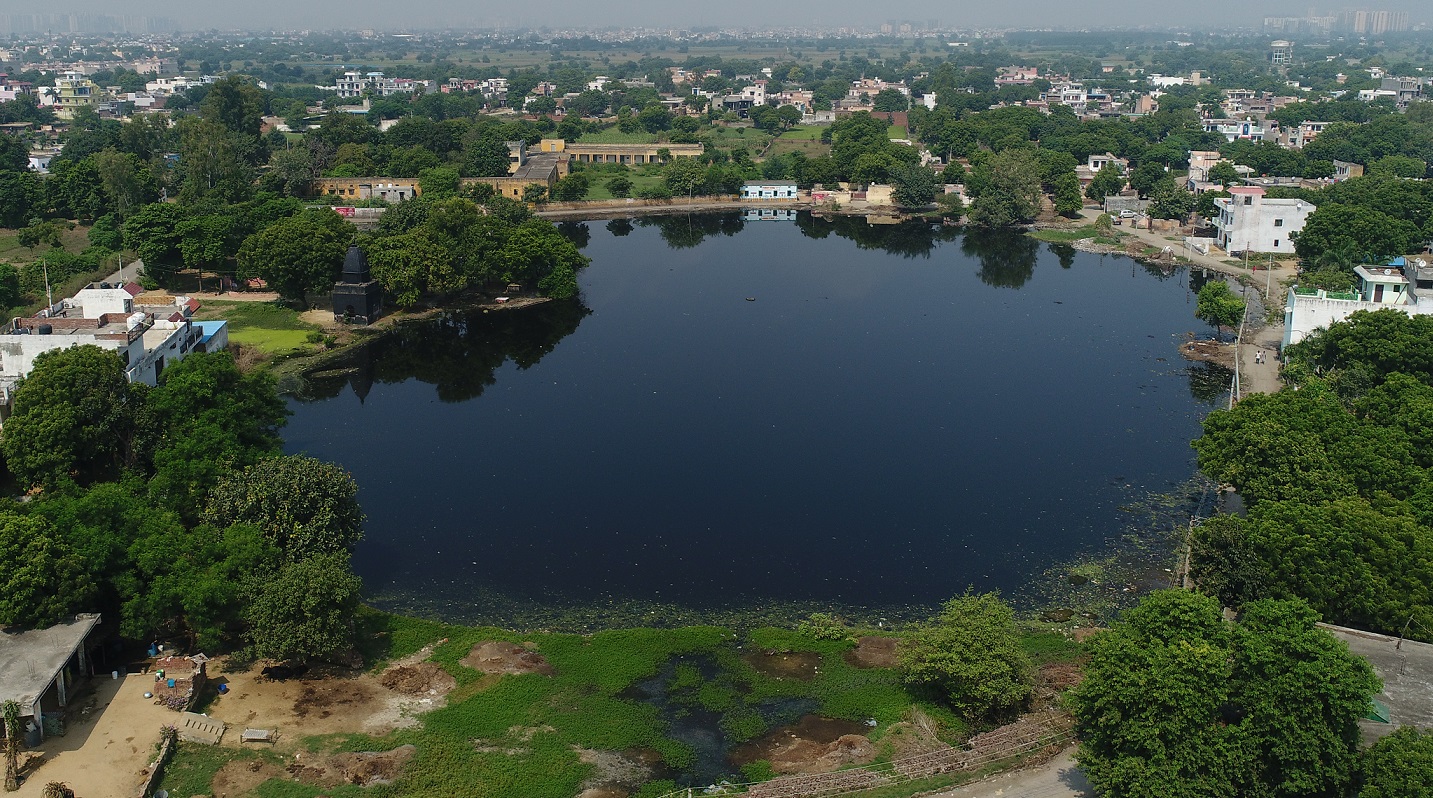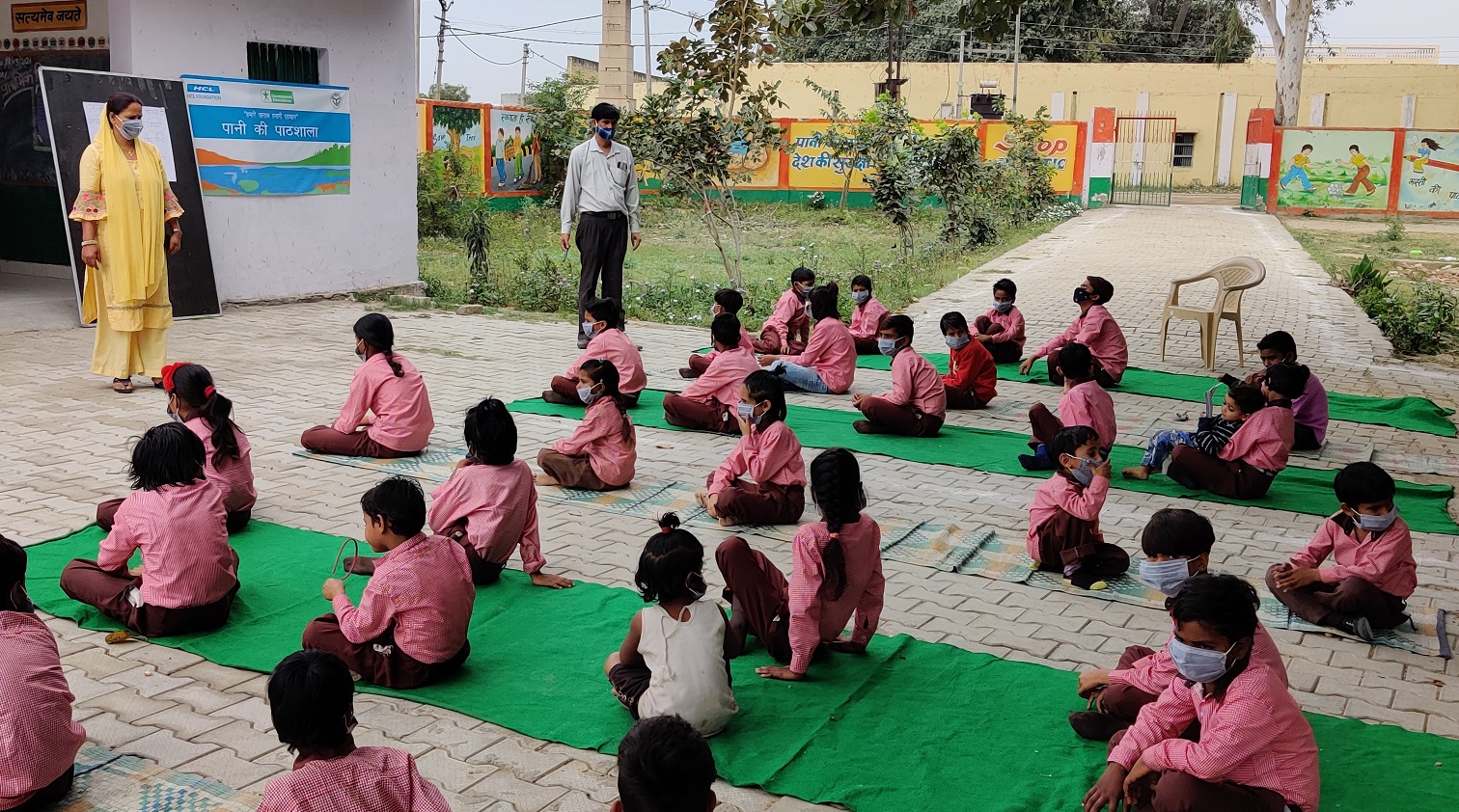|
Reviving Traditional
Water Bodies,
One Tank at a Time
India is endowed with extraordinarily diverse and distinctive
traditional water bodies found in different parts of the country,
commonly known as ponds, tanks, lakes and others. They play an important
role in maintaining and restoring the ecological balance. They act as
sources of drinking water, recharge groundwater, support biodiversity
and provide livelihood opportunities to a large number of people.
India is facing a major challenge in the management of freshwater in
view of rapidly growing population and increasing agricultural,
industrial and other requirements. As the economy of the country is
witnessing rapid growth, management of freshwater resources becomes all
the more important.
Tanks in India have fallen into disuse due to lack of care, poor
governance systems and encroachments. Storage areas of many tanks have
become agricultural fields, while some have been transformed into
residential areas. Such tanks may continue to exist on records but, for
all practical purposes, they have disappeared. Catchment areas of many
tanks have become degraded and encroached. A large number of tanks are
facing heavy siltation, and their water holding capacity has also got
reduced. Most of these tanks today are not fully functional due to a
number of reasons. Efforts have been made to review these tanks but they
are not sufficient and require a long-term strategy to review and make
these tanks functional.
Improving the health of water bodies is of utmost importance for meeting
the rising demand for water, as they provide various ecosystem services.
 Scenario in Gautam Buddha Nagar district of Uttar Pradesh Scenario in Gautam Buddha Nagar district of Uttar Pradesh
One such initiative taken to restore the traditional tank ecosystem
was undertaken by Development Alternatives in collaboration with HCL
Foundation. The initiative, called ‘Humare Talab Humari Pehchan’, aims
to work on tank rejuvenation in Dadri tehsil of Gautam Buddha Nagar
district of Uttar Pradesh. The project focuses on rejuvenating the lost
water body ecosystem in the area, while also strengthening the lost tree
cover. The tanks in the area were not properly managed due to various
reasons and needed immediate attention. This was done by planning
specifically around each tank and conducting plantation drives in four
villages, namely, Dujana, Kachera Varsabad, Bishnoli and Talabpur
Hathipur.
Recent data from the Central Ground Water Board shows that water level
in Gautam Buddha Nagar area is depleting by 1.5 metres every year. This
trend of depletion is witnessed continuously for the past five years.
Environmentalists say that the major cause of this depletion is
over-extraction of ground water for construction purposes, and warn that
if the same rate of extraction continues then the water will start
depleting at the rate of two meters annually, which could lead to a
severe water crisis.
There are hundreds of water bodies in the region, but they are hardly
evident today. Proper restoration and rejuvenation of these water bodies
along with afforestation can bring back the lost green patch in the
area.
Interventions made in the area
To get to know more about the tanks and the community living in the
vicinity of them, a baseline survey was conducted. This survey provides
us with information regarding uses of these tanks and their pre and
post-intervention conditions. It also focuses on the level of awareness
people possess regarding the tank ecosystem and biodiversity.
From the households surveyed, it was found that nearly 58 per cent of
them had tap water facilities and there is no dependency on the tanks
for water for either domestic or irrigation purposes. Villagers said
that the tanks have not been cleaned for decades.
The
project work has been divided into three parts: Assessment, Action and
Awareness.
-
 The assessment part, which was done through the household survey,
gathered information about the location and condition of tanks and the
tank ecosystem, and the knowledge of community members regarding the
need and importance of tanks. The assessment part, which was done through the household survey,
gathered information about the location and condition of tanks and the
tank ecosystem, and the knowledge of community members regarding the
need and importance of tanks.
-
The action part majorly focused on the work done on the field
after gathering the basic knowledge on the condition of the tanks. It
includes methods and technology such as de-watering, de-siltation and
bund construction for cleaning and rejuvenating the tanks.
-
Lastly, the awareness part was designed to create awareness among
the community regarding the conservation of tanks and biodiversity
through street plays, wall painting, awareness campaigns with community
and schoolchildren, and inculcating in them a sense of ownership towards
the natural resources in the villages.
Impact
A
total of eight tank water bodies were rejuvenated by creating additional
water storage capacity, which went up from 11,28,333 cubic metres to
11,65,436 cubic metres, that is, an average of 45.53 per cent, by
deepening them. Drainage lines of 510 running metres were treated and
1,686 running metre of bunds were constructed. The green cover was
increased in the four villages by planting 866 trees on the bunds of
tanks.
It was observed that it is necessary to involve the younger generation
as they are the ones who will carry on the knowledge of water
conservation and it will be helpful to rejuvenate water bodies with
their new ideas.
Conclusion
Efforts are required at the infrastructural, institutional and social
levels for rejuvenating these water bodies. The project worked at all
the dimensions mentioned above, thus providing an end-to-end sustainable
solution that focuses on improving the health of these water bodies and
also inculcating a sense of ownership among community members towards
their protection and maintenance.
Efforts are required at both ends: on one hand technological
interventions with the panchayat are necessary to bring tanks into their
original state, whereas on the other hand awareness and capacity
building campaigns and drives are needed to enhance the understanding
among the community on importance and conservation of the water bodies.
However, the issues of lack of data, encroachments, siltation,
unsystematic solid waste disposal, polluted water, etc. have to be taken
into consideration too.
Traditionally, water was seen as a responsibility of citizens and the
community collectively took the responsibility of not only building but
also of maintaining water bodies. This needs to be brought back into the
system. Thus, an integrated approach taking into account the long-term
sustainability, starting from the planning stage, looking at every water
body, is required.■

Figure:
Tank-specific planning done for each tank in the four villages
Anisha Gupta
agupta@devalt.org
Back to Contents
|
 Scenario in Gautam Buddha Nagar district of Uttar Pradesh
Scenario in Gautam Buddha Nagar district of Uttar Pradesh The assessment part, which was done through the household survey,
gathered information about the location and condition of tanks and the
tank ecosystem, and the knowledge of community members regarding the
need and importance of tanks.
The assessment part, which was done through the household survey,
gathered information about the location and condition of tanks and the
tank ecosystem, and the knowledge of community members regarding the
need and importance of tanks. 